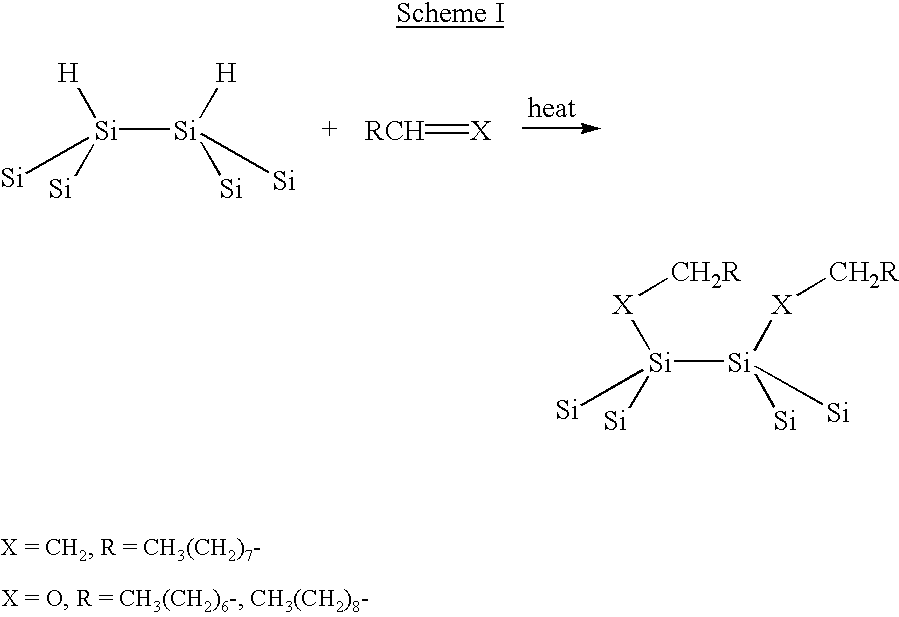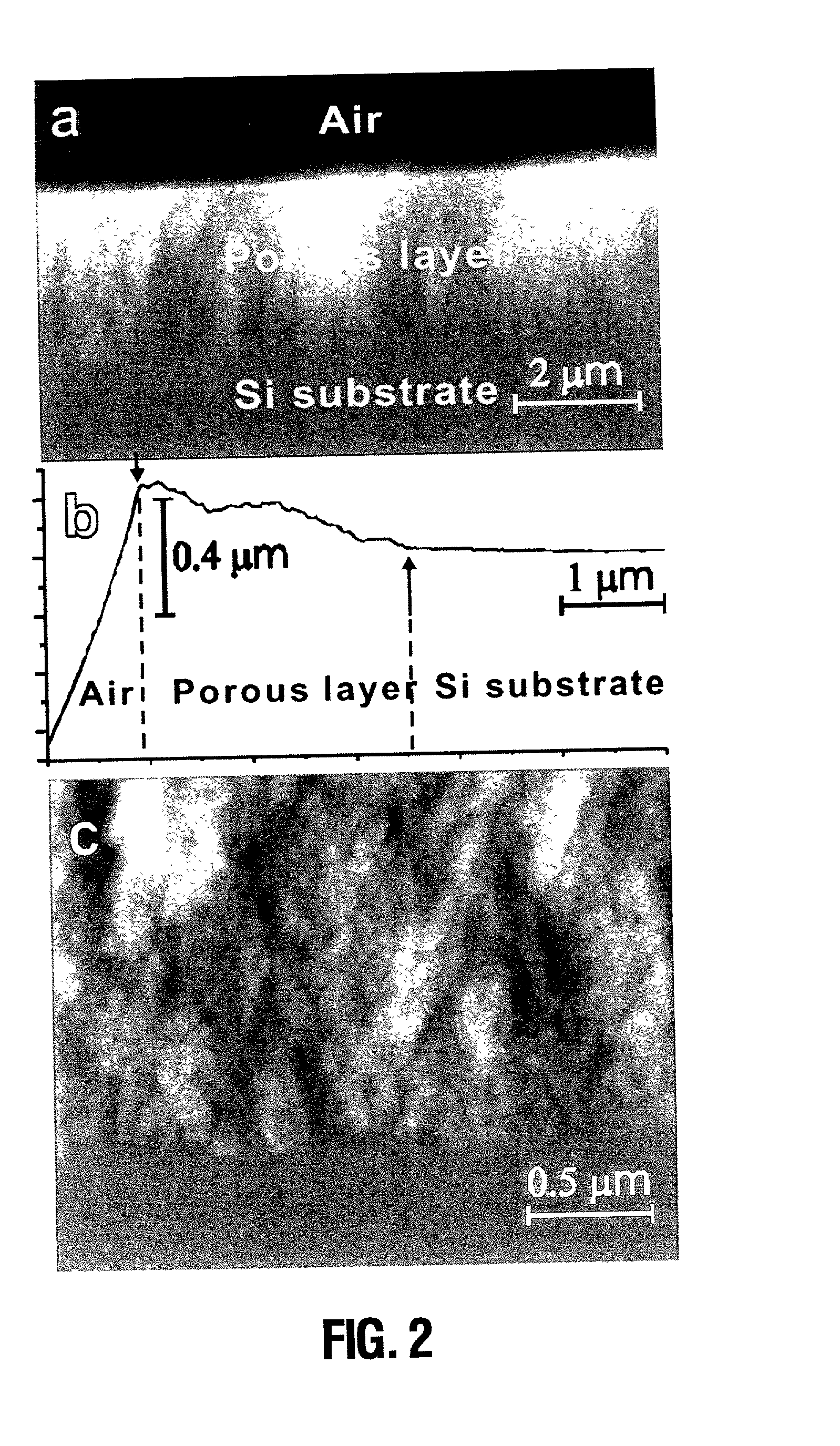Passivation of porous semiconductors
a technology of porous semiconductors and semiconductors, applied in the field of porous silicon, can solve the problems of slow degradation of photoluminescence exposure to air, restricting the use of psi in the fabrication of commercial devices, and concomitant degradation of material electronic properties, etc., and achieves unprecedented stability, low defect density, and high chemical stability.
- Summary
- Abstract
- Description
- Claims
- Application Information
AI Technical Summary
Benefits of technology
Problems solved by technology
Method used
Image
Examples
example
[0031] Silicon wafers were purchased from Virginia semiconductor. All cleaning and etching reagents were clean room grade (Olin Microelectronics Materials). All other reagents were obtained from Aldrich and were the highest purity available. Single side polished (100) oriented p-type silicon wafers (B-doped, 1-1.05 ohm-cm resistivity) were first cleaned in 3:1 concentrated H.sub.2SO.sub.4 / 30% H.sub.2O.sub.2 for 5 min at room temperature and then rinsed copiously with Milli-Q water. The clean wafers were immersed in 48% aqueous HF solution for 1min at room temperature to remove the native-oxide. The hydrogen-terminated surfaces were electrochemically etched in a 1:1 (v / v) pure ethanol and 48% aqueous HF for 8 min at a current density of 5 mA / cm.sup.2. After etching, the samples were rinsed with pure ethanol and dried under a stream of dry nitrogen prior to use. Atomic force microscopy (AFM) in contact mode showed that PSi films prepared in this way are 2.5 to 3 .mu.m thick with an av...
PUM
| Property | Measurement | Unit |
|---|---|---|
| temperature | aaaaa | aaaaa |
| temperature | aaaaa | aaaaa |
| temperature | aaaaa | aaaaa |
Abstract
Description
Claims
Application Information
 Login to View More
Login to View More - R&D
- Intellectual Property
- Life Sciences
- Materials
- Tech Scout
- Unparalleled Data Quality
- Higher Quality Content
- 60% Fewer Hallucinations
Browse by: Latest US Patents, China's latest patents, Technical Efficacy Thesaurus, Application Domain, Technology Topic, Popular Technical Reports.
© 2025 PatSnap. All rights reserved.Legal|Privacy policy|Modern Slavery Act Transparency Statement|Sitemap|About US| Contact US: help@patsnap.com



